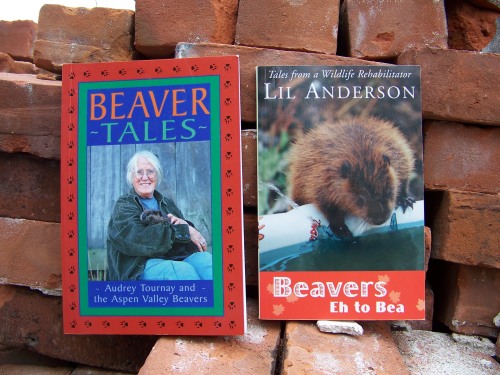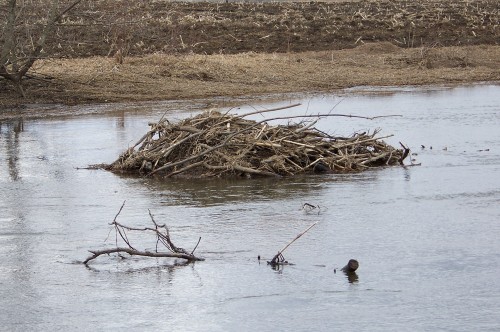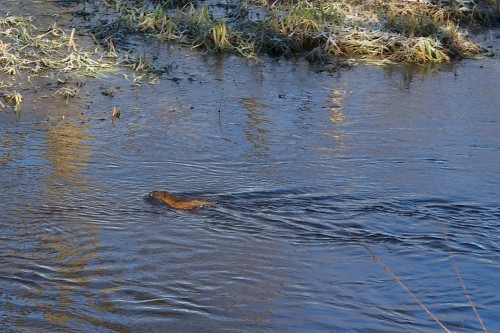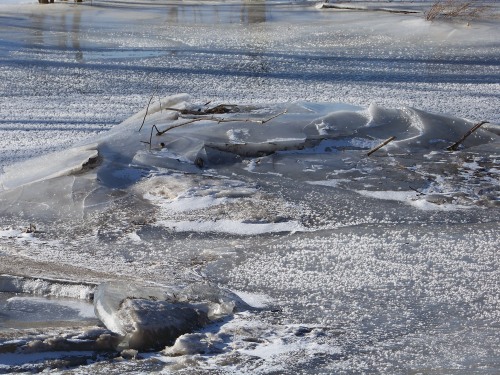
Beaver Tales by Audrey Tournay. Boston Mills Press, 2003
Beavers Eh to Bea by Lil Anderson. Turnstone Press, 2000.
In 1972, Audrey Tournay, a high school teacher, purchased a derelict farm in the Muskoka region of Ontario, unaware that she was establishing what would one day become the Aspen Valley Wildlife Sanctuary. It began with an orphaned raccoon, and over the years that followed, many other orphans and accident victims arrived at the Sanctuary. But Tournay’s favorites were the beavers. Beaver Tales tells the story of the Sanctuary and of some of the beavers Tournay has cared for and loved. That Tournay is no ordinary person is evident in this passage about living with a beaver in the house:
Witness the “arches” in my house. They are not the smoothly fashioned golden arches familiar on every continent the world around, but they are far more interesting. Each one is unique, carved personally by a beaver. The first arch was at the front door. Though doors may shut out dogs, cats, wolves, bears, even humans, to a beaver wooden doors are a mere temporary impediment. A beaver can chisel an archway at the bottom of a door – an archway large enough to let his fat self through – in about twenty minutes. … I covered the lower two feet of the [front] door with tin. … it did deter the beaver for a few days. Then, with strong teeth and dextrous hands, he simply removed it. … it became necessary to replace the wooden door with a modern door of steel. But the other arches, for the most part, remain.
The Aspen Valley Wildlife Sanctuary has grown over the years. Looking after wildlife is an expensive undertaking and donations are always welcomed. You can also visit the Sanctuary. For details, visit the Sanctuary’s website.

Beaver lodge, March 2009, near Willow House
Beavers have suffered incredibly at the hands of humans. The Canadian nickel features a beaver, not because we admire these mammals but because Canada was built on the backs of beavers, trapped by the millions for the fur trade. Today, beavers are still trapped, but as human civilization encroaches ever more into beaver territory, beavers also suffer from displacement and death through habitat destruction, traffic accidents and other confrontations with “progress”. Wildlife rehabilitator Lil Anderson’s book, Beavers Eh to Bea, tells the story of her experience with two beaver kits near Kenora, Ontario. Anderson’s story is filled with interesting details about beaver life. One passage I enjoyed tells of her effort to find a food to replace difficult-to-procure water lily bulbs:
Obviously, because of the difficulty in getting lily roots, I had to find a more readily accessible but nutritious substitute. Not relishing the thought, I decided I would have to taste the lily root to see if I could match the taste with some “human” food. After swilling the aftertaste of mud out of my mouth, I noted a taste not unlike that of boiled potatoes, except maybe sweeter. Chunks of boiled potatoes dipped in yogurt – and sometimes whipping cream for added calcium – were big sellers that Bea would chose even over lily roots. When the kits switched to more solid food, raw yams became an important supplement to their diets.

Beaver swimming behind Willow House, Fall 2008
Both Tournay and Anderson speak of the joy of animals. Of a newly release young deer, Anderson writes:
He would race up to us with a look that could only be described as pure and absolute joy, prance in front of us, and then race off and around and around again.
Tournay expands on this with:
Rarely, from the lofty heights from which we humans observe creatures, do we see beyond the patterns of their lives to the joy that they often know. That animals can know joy may not be more than mere speculation, of course, but it’s consistent with my experience with animals. … Taking walks with raccoons, I have tried to see the world through their eyes – bouncing, happy creatures who scuttle beneath the shady undergrowth and then scamper up to the sun-speckled tree tops. I have watched the quiver of excitement of skunks moving among mossy stones. And I have swum in the pond with beavers and seen them swirl and dive and stretch their sleek bodies in the pure ecstasy of the moment.
For more information about beavers and some great photographs, visit Naturespeak: The Master of Castor.

The beaver lodge in winter, January 2009.